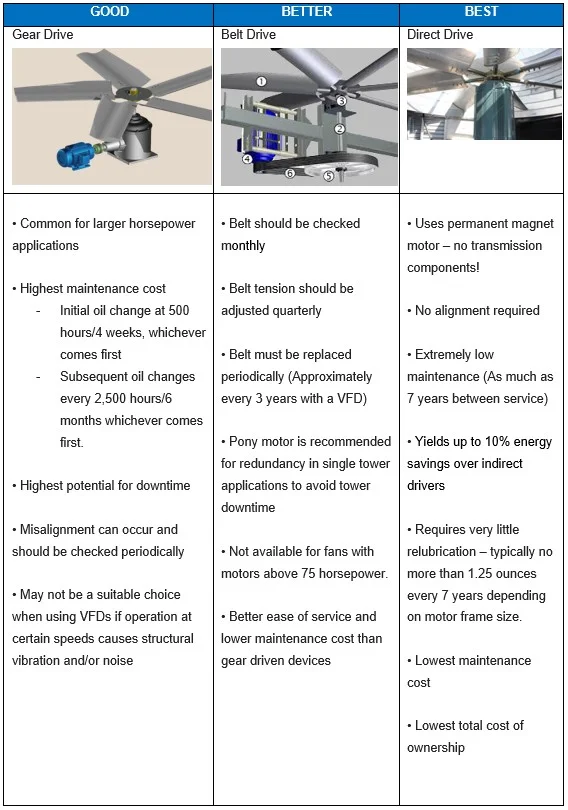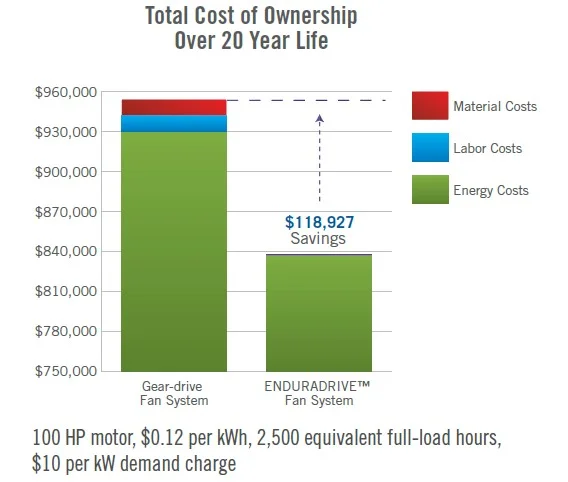How to Pick A Cooling Tower: Choosing a Fan Driver
/By Chad Edmondson
Every cooling tower has a fan (or fans if it includes multiple cells) and these fans require some sort of mechanism or “driver” to transfer energy from the motor to the fan shaft. This transfer can be direct or indirect, depending on the method chosen.
Indirect drivers either have gears to transfer energy or they have a belt that connects the motor shaft to a “sheave” (a grooved wheel which holds the belt).
Direct drivers, a new more modern and efficient approach, have no such transmission components. Instead, they use permanent magnet motors which directly turn the fan.
Direct Driver
Since there is always some degree of energy loss between the motor and the fan when indirect methods are used, direct magnetized motors typically use up to 10% less energy than either gear or belt drivers. Direct drives are also a more maintenance friendly, requiring only a fraction of the lubricant that indirect drivers require. Direct drivers are able to go up to seven years between lubrication which significantly reduces maintenance costs.
That’s not to say that indirect methods aren’t effective; they are with proper maintenance. As with most mechanical selections, there is a trade-off between first cost and lifecycle cost. At JMP we tend to break such options down into categories of GOOD, BETTER and BEST. Ultimately, the engineer must weigh the many benefits of a direct driven fan against an owner’s tolerance for first cost.
Important Comparative Factors
Indirect drivers require more maintenance – gear drivers more so than belts. Both require lubricant which must be checked and replenished periodically. The oil in a gear driver must be completely replaced on a regular basis just like an oil change in a car; this makes gear drivers the least environmentally friendly choice. As is often the case, more moving parts generally mean more maintenance and greater potential for something to go wrong. Gear drives may require alignment which, if not done properly, can shorten the life for the driver. A belt drive is a better choice if a smaller motor is chosen. Belt drives have fewer moving parts and do not require oil lubrication. Changes in technology such as rust-free aluminum sheaves along with industrial grade belts have increased the life and decreased the maintenance of this type of drive system.
The chart below provides a quick comparative overview of all three drivers:
Lifecycle Costs
Exactly how much does a direct driven cooling tower fan save an owner over the life of the system? Certainly, costs vary depending on a number of factors, but there are comparisons avaliable between a gear driven system and its direct drive fan system:
Additional operational and maintenance comparisons between gear types are available for download here:








